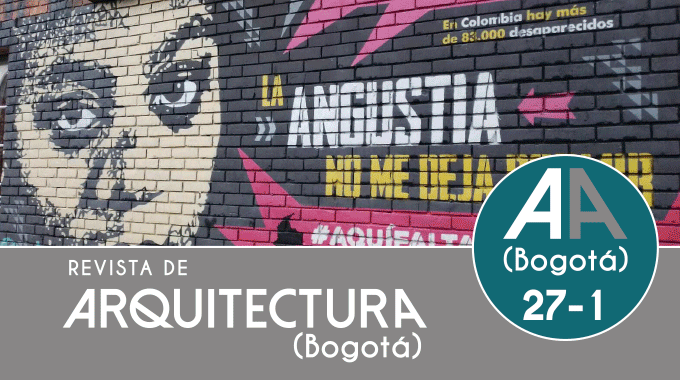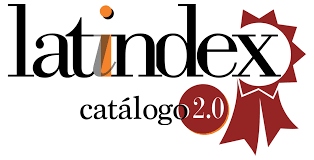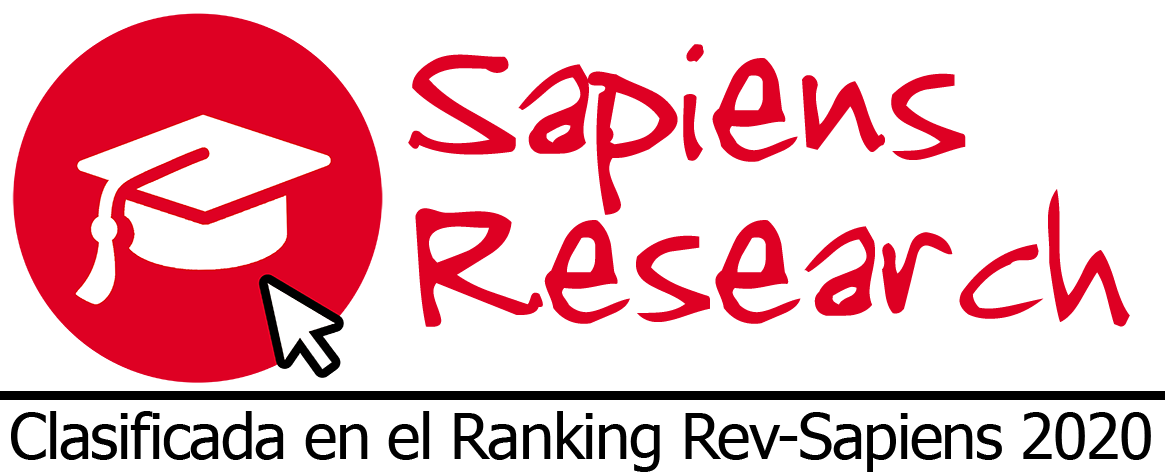

This work is licensed under a Creative Commons Attribution-NonCommercial 4.0 International License.
Revista de Arquitectura is an open access journal. More information...
Authors retain copyright and grant to the Revista de Arquitectura the right of first publication, which will be simultaneously subject to the Creative Commons (CC) BY-NC license.
Authors will sign a non-exclusive distribution license for the published version of the article by completing (RevArq FP03 Permission to Reproduce).
Self-archiving will comply with SHERPA/RoMEO guidelines and the Green classification.
To see in detail these guidelines, please consult...
Abstract
This article presents the results of a content analysis of 60 signals, randomly selected, aimed at citizen
conviviality, randomly chosen, located in public spaces, socioplaces, and No-places. The analysis is
based on the function promoted by the signals, their perceptual characteristics, location, the type of
social rule demanded to follow, and whether macro or metacontingencies are established in them
to encourage urban-responsible behaviors (CUR). The results reflect that the signs are oriented
towards safety, hygiene, mobility, environmental care, and heritage preservation; they differ in terms
of the type of benefit or sanction they announce for following or not the rule; they do not follow a
unified pattern in their design; and there are few that articulate the collective benefit of adhering
to the rules. The importance of city administrations is discussed in designing signage oriented
towards the compliance of rules that promote CUR within an integrated system that defines their
perceptual characteristics, informs citizens about the results of following coexistence rules through
macro and metacontingencies, and plans their location within urban space.

References
Augé, M. (1989). Los no lugares, espacios del anonimato. Una antropología de la sobremodernidad. Gedisa Editorial
Austin, J., Hackett, S., Gravina, N., & Lebbon, A. (2006). The effects of prompting and feedback on drivers’ stopping at stop signs. Journal of Applied Behavior Analysis, 39(1), 117-121. https://doi.org/10.1901/jaba.2006.49-04
Bachman, W., & Kattzev, R. (1982). The effects on non-contingent free bus tickets and personal commitment on urban bus ridership. Transportation Research, 16A, 103-108.
Barnes-Holmes, D., O ́Hora, D., Roche, B., Hayes, S. C., Bissett, R. T. , & Lyddy, F. (2001). Understanding and verbal regulation. En S.C. Hayes, D. Barnes-Holmes & B. Roche (Eds.), Relational frame theory: A post- Skinnerian account of human language and cognition (pp. 103-117). Kluwer Academic.
Bateson, M., Callow, L., Holmes, J. R., Redmond Roche, M. L., & Nettle, D. (2013). Do images of “watching eyes” induce behaviour that is more pro-social or more normative? A field experiment on littering. PLoS ONE, 8(12). https://doi.org/10.1371/journal.pone.0082055
Bazant, S. J. (1986). Manual de criterios de diseño urbano. Editorial Trillas.
Bertalanffy, L. V. (1976). Teoría general de los sistemas. Fondo de Cultura Económica.
Catania, A. C., Shimoff, E. H., & Matthews, B. A. (1989). An experimental analysis of rule-governed behavior. En S. C. Hayes (Ed.), Rule-governed behavior: Cognition, contingencies, and instructional control (pp. 119-150). Plenum Press.
Clayton, M., Helms, B., & Simpson, C. (2006). Active prompting to decrease cell phone use and increase seat belt use while driving. Journal of Applied Behavior Analysis, 39(3), 341-349. https://doi.org/10.1901/jaba.2006.153-04
Costa, J. (1987). Señalética: De la señalización al diseño de programas. CEAC.
Dwyer, P. C., Maki, A., & Rothman, A. J. (2015). Promoting energy conservation behavior in public settings: The influence of social norms and personal responsibility. Journal of Environmental Psychology, 41, 30-34. https://doi.org/10.1016/j.jenvp.2014.11.002
Ernest-Jones, M., Nettle, D., & Bateson, M. (2011). Effects of eye images on everyday cooperative behavior: A field experiment. Evolution and Human Behavior, 32(3), 172-178. https://doi.org/10.1016/j.evolhumbehav.2010.10.006
Everett, P. B. (1982). Reinforcement theory strategies for modifying transit ridership. En Altman y Everett, P.B., Human behaviour and the environment. Plenum.
Glenn, S. S., & Malott, M. E. (2020). Systems, metacontingencies, and cultural behavior analysis: Beyond individual behavior. Behavior and Social Issues, 29(1), 23-35.
Harte, C., Barnes-Holmes, D., Barnes-Holmes, Y., & Kissi, A. (2020). The study of rule-governed behavior and derived stimulus relations: Bridging the gap. Perspectives on Behavior Science, 43, 361-385. DOI: 10.1007/s40614-020-00256-w
Heller, E. (2008). Psicología del color: Cómo actúan los colores sobre los sentimientos y la razón. Editorial Gustavo Gili.
Kormos, C., Gifford, R., & Brown, E. (2015). The influence of descriptive social norm information on sustainable transportation behavior: A field experiment. Environment and Behavior, 47(5), 479-501. https://doi.org/10.1177/0013916513520416
Liu, Z., & Yang, J. Z. (2022). Predicting recycling behavior in New York State: an integrated model. Environmental Management, 70(6), 1023-1037. https://doi.org/10.1007/s00267-022-01708-6
Lotti, L., Barile, L., & Manfredi, G. (2023). Improving recycling sorting behavior with human eye nudges. Scientific Reports, 13(1). https://doi.org/10.1038/s41598-023-37019-x
Manuel, J. (2011). Señalética y señalización para una mejor accesibilidad. Mi Diario Urbano [Blog]. http://midiariourbano.blogspot.com/2011/12/senaletica-y-senalizacion-para-una.html
Medina-Arboleda, I. F., Barreto, I., Aguilar-Pardo, D. R., & Sandoval-Escobar, M. C. (Eds.). (2020). Perspectivas y contextos de la prosocialidad y la convivencia. Editorial Universidad Católica de Colombia. https://doi.org/10.14718/9789585133471.2020
National Geographic. (2010, 5 de septiembre). Amenazas de la urbanización. https://www.nationalgeographic.es/medio-ambiente/amenazas-de-la-urbanizacion
Páramo, P. (2011). Sociolugares. Universidad Piloto de Colombia. http://scielo.org.co/scielo.php?script=sci_arttext&pid=S0120-05342011000300014
Páramo, P. (2014). Comportamiento urbano responsable: Las reglas de convivencia en el espacio público. Revista Latinoamericana de Psicología, 45(3), 473-485. https://doi.org/10.14349/rlp.v45i3.1488
Páramo, P. (2017). Sociolugares públicos. Universidad Pedagógica Nacional. DOI:10.17227/ecp.2017.6147
Páramo, P., & Burbano, A. (2020). Diseño de macro y metacontingencia para la promoción del comportamiento proambiental y urbano responsable. CES Psicología. Revistas Científicas Universidad CES, 14(1), 36–48. https://revistas.ces.edu.co/index.php/psicologia/article/view/5534
Páramo, P., Burbano, A., Muñoz Montilla, A. N., Hernández, A., & Salcedo Camelo, C. M. (2020). Reglas proambientales: Análisis a partir de su relevancia, consecuencias asociadas y esfuerzo para seguirlas. Psicología desde el Caribe, 37(3), 186-210. https://doi.org/10.14482/psdc.37.3.304.2
Páramo, P., & Burbano, A. (2019). Gramática espacial urbana: la orientación espacial guiada por reglas verbales: Spatial and urban grammar: spatial orientation focuses on verbal rules. Psicogente, 22(41), 1-18. https://doi.org/10.17081/psico.22.41.3313
Páramo, P., & Contreras, M. M. (2018). Formación ciudadana en comportamientos urbanos responsables: etnografía rápida orientada a la convivencia en el espacio público urbano. Cuadernos de Vivienda y Urbanismo, 11(22). https://doi.org/10.11144/Javeriana.cvu11-22.fccu
Pietras, C. J. (2022). Rule-governed behavior and climate change: Why climate warnings fail to motivate sufficient action. Behavior and Social Issues, 31(1), 373-417. https://doi.org/10.1007/s42822-022-00109-y
Pinilla López, R. F., & Páramo, P. (2021). Elección de un comportamiento urbano responsable a partir del beneficio, la saliencia del anuncio y la probabilidad de recibir aprobación o reproche. Divers: Perspect. Psicol, 17(2), 186-197. https://doi.org/10.15332/22563067.7248
Qin, B., & Chen, H. (2022). Does the nudge effect persist? Evidence from a field experiment using social comparison message in China. Bulletin of Economic, 74(3), 689-703. https://doi.org/10.1111/boer.12313
Ribes, E. (2000). Instructions, rules and abstraction: A misconstrued relation. Behavior and Philosophy, 28, 41-25. https://psycnet.apa.org/record/2001-14653-002
Skinner, B. (1979). Un análisis operante de la solución de problemas. En B. Skinner (Ed.), Contingencias de reforzamiento (pp. 127-159). Editorial Trillas.
Todorov, J. C. (2013). Conservation and transformation of cultural practices through contingencies and metacontingencies. Behavior and Social Issues, 22, 64-73. https://doi.org/10.5210/bsi.v22i0.4812
Van Houten, R., & Malenfant, J. E. L. (2004). Effects of a driver enforcement program on yielding to pedestrians. Journal of Applied Behavior Analysis, 37(3), 351-363. https://doi.org/10.1901/jaba.2004.37-351
Van Houten, R., Malenfant, J. E. L., Reagan, I., Sifrit, K., Compton, R., & Tenenbaum, J. (2010). Increasing seat belt use in service vehicle drivers with a gearshift delay. Journal of Applied Behavior Analysis, 43(3), 369-380. https://doi.org/10.1901/jaba.2010.43-369
































